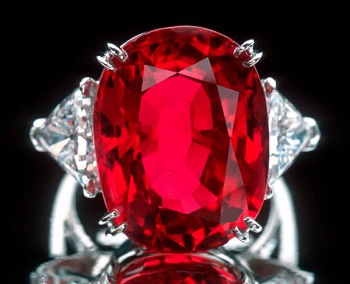Gemfields has released a new survey on buying behavior.
Color and clarity are the most important factors influencing a consumer’s gem-buying decision, according to a recent study conducted on behalf of Gemfields, a supplier of responsibly sourced precious stones.
The study of 12,900 U.S. consumers between the ages of 21 and 64 revealed that when it comes to purchasing rubies, sapphires and emeralds, color is the key consideration, followed by clarity, carat weight and, to a much lesser degree, the country of origin.
The survey also showed that millennials (those born between 1982 and 2004) have a greater fondness for precious gemstones than other groups. Overall, 41 percent of millennials said they had acquired jewelry featuring a ruby, emerald or sapphire within the past 24 months. That percentage is significantly higher than the 31 percent registered by the overall survey sample.
As an interesting side note, millennials are nearly twice as likely as non-millennials to use social media and mobile devices to research jewelry and gemstones.
Precious gemstone owners love to wear their jewelry, according to the survey. Exactly 43 percent of women reported that they wear their rubies, emeralds or sapphires every day. About one in four said they wear the gemstone jewelry at least once a week and just 7 percent noted that they only wear the jewelry on special occasions.
Advertisement
Another interesting finding was related to multiple purchases. Nearly four in 10 (38 percent) of those who had purchased fine gemstone jewelry during the prior 24 months had actually gotten two items. Fifteen percent acquired three pieces and 10 percent had bought four or more.
For the overall sample, the average price paid for a piece of precious stone jewelry was $1,386, although men ($2,048) and affluent buyers ($2,499) with incomes of $100,000-plus were apt to pay significantly more.
Half of the respondents who said they purchased precious colored stone jewelry in the past two years and two-thirds of those in affluent households said they are likely to buy another piece within the next year.
The study, which reflects a nationally representative sample, was conducted for Gemfields by a third party to determine the overall size and potential of the U.S. market and to better understand consumers’ beliefs and perceptions about the value, price and use of precious gemstone jewelry.
Photo credit: Carmen Lúcia Ruby of Smithsonian/Chip Clark.
Howard Cohen is the Shoreham, NY-based editor of The Jeweler Blog, a daily blog ghost-written for retail jewelers. Cohen, a long-time industry veteran, is dedicated to making social media tasks simple and affordable for every jeweler. For more information, visit thejewelerblog.com or contact Cohen at 631-821-8867, hscohen60@gmail.com.
Advertisement
This is an online extra for INSTORE Online.